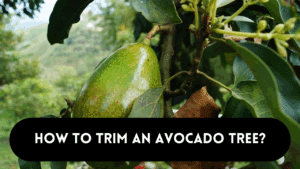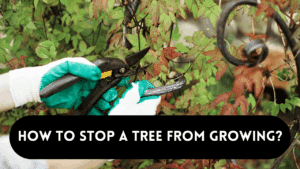When it comes to the lush landscapes of a Homeowners Association (HOA) neighborhood, the issue of tree removal comes up frequently. As a homeowner, you may consider removing a tree from your property for a variety of reasons, including safety issues, landscaping enhancements, or a simple change in your outdoor surroundings. However, given the tightly woven fabric of a HOA community, tree removal is not always a simple operation. The crucial question that many homeowners face is, “Do I need HOA approval to remove a tree?”
Understanding the HOA Rules and Regulations
Homeowners Association (HOA) communities frequently have tight standards in place to protect the neighborhood’s aesthetics and general environment.
These standards include a wide range of property management issues, such as landscaping and tree removal. If you are thinking, “Do I need HOA approval to remove a tree?” it is critical that you first properly comprehend these standards.
Reviewing the Governing Documents
Reviewing the governing papers is essential for gaining a thorough grasp of the laws and regulations governing tree removal within your HOA.
These usually contain the Covenants, Conditions, and Restrictions (CC&Rs) and architectural rules. When considering tree removal, these documents clarify the precise standards and processes that must be followed.
Consultation With Your HOA Board
Your next step should be to meet with your HOA board. They are the principal source of information about the laws and regulations governing tree removal in your municipality.
The board can give you precise information regarding the approval procedure, any related fees, or any conditions you must satisfy.
Common HOA Tree Removal Policies
HOAs may have a number of rules and regulations in place to manage tree removal in their communities. These rules may differ from one HOA to the next; however, some frequent criteria include:
Tree Size:
Your homeowners’ association may designate a minimum tree size that can be removed without obtaining official consent. Smaller trees may not need as much attention as bigger ones.
Tree Location:
Trees placed near common spaces or within a certain distance of dwellings may require permission to be removed. The closeness of the tree to community spaces or dwellings frequently determines the need for permission.
Arborist review:
Some HOAs may request an arborist review before permitting tree removal. The arborist evaluates the tree’s health and determines if removal is essential or whether alternative options are preferable.
Replacement Requirements: Your HOA may require the replacement of any trees removed in order to preserve the general landscape aesthetics of the neighborhood. This may entail planting new trees in lieu of those you wish to remove.
Effects on Neighbors
The possible influence on neighbors’ views, property values, and overall satisfaction may be assessed. A tree that obstructs a neighbor’s view or causes problems with their property may result in complaints and conflicts.
In order to preserve a pleasant living environment, HOAs may consider how tree removal may affect neighborly connections within the community.
Backup Plans
The HOA may request that you replace the destroyed tree with a suitable species in order to preserve the community’s landscape. The new tree should represent the community’s desire for greenery and aesthetic appeal.
Do I Need HOA Approval to Remove a Tree?
One of the most common questions among homeowners within an HOA is whether they need approval to remove a tree from their property. The answer is a resounding “yes.” HOAs typically have strict guidelines and regulations in place, and tree removal is subject to their approval.
The Approval Procedure
The clearance procedure for tree removal within a HOA is crucial to ensuring that your plans adhere to the community’s norms and aesthetics. Here’s a more in-depth look at what this procedure normally entails:
1. Preliminary Evaluation
Before formally asking for consent for tree removal, it is best to undertake a preliminary examination of the tree in question. This involves assessing its health, condition, and any unique difficulties that need its removal. Having this material on hand will help you make a strong argument to the HOA board.
2. Preparing Your Request
After familiarizing yourself with the HOA laws and assessing the tree, it’s time to write your request. This request should include:
- An official letter describing the location and condition of the tree.
- The reasons for desiring to remove the tree, such as illness, safety issues, or landscape enhancements,
- Any relevant material, such as images, arborist reports, or other proof that supports your argument.
- A proposal for any tree replacement requested by the HOA.
3. Submitting Your Request
Your completed request should be sent to the HOA board or the authorized committee in charge of considering such requests. To improve the efficiency of the approval process, ensure that your application is thorough and well-organized.
4. Review by the HOA
The HOA board or committee will consider your proposal in accordance with the stated rules. They will determine if your case meets the HOA’s tree removal restrictions and whether your grounds for removal are genuine.
5. Feedback and Approval
Following a review of your request, the HOA will give comments, which may include requests for further information or clarification. To expedite the approval process, it is critical to respond to any inquiries as soon as possible.
Once the HOA is happy with the information supplied and finds that your request is in accordance with their criteria, they will approve the tree removal. This consent is usually given in the form of a formal written notification.
6. Removal and Adherence
After receiving clearance, you can proceed with the tree removal as specified in your request. Make certain that you follow any limitations or regulations imposed by the HOA, such as the replacement of removed trees.
The Importance of Approval
The permission procedure is a critical component of tree removal in a HOA community. It contributes to the neighborhood’s general beauty, safety, and harmony.
By following the set criteria and receiving formal permission, you help to preserve the community’s identity and guarantee that your activities are consistent with the members’ collective vision.
Finally, the HOA permission procedure for tree removal is an organized and important step. You may manage the complications of tree removal with transparency and in line with your community’s rules if you understand and follow this approach.
FAQS
What factors might lead to the need for tree removal within an HOA community?
Tree removal within an HOA may be necessary due to factors like disease, structural issues, root damage, or a need to maintain the community’s aesthetics.
Do all HOAs follow the same tree removal policies?
No, HOA requirements for tree removal might vary greatly. Each HOA may have its own set of regulations, so it’s critical to read your community’s governing papers.
What is the procedure for obtaining HOA clearance for tree removal?
The procedure normally include compiling a request with facts regarding the tree’s condition and grounds for removal, submitting it to the HOA board, and gaining formal permission.
Are there any ramifications for failing to acquire HOA consent for tree removal?
Noncompliance with HOA requirements can result in fines and penalties. It may also affect communal bonds.
Is it necessary to consult a professional arborist when considering tree removal inside a HOA?
Yes, engaging an arborist or landscaper may give vital insights into the tree’s health and the best course of action to meet your HOA’s criteria.
Conclusion
Navigating the tree removal procedure within a Homeowners Association (HOA) neighborhood requires attention to detail and respect for norms. The critical topic of whether you need HOA consent to remove a tree emphasizes the need to familiarize yourself with your community’s laws and processes.



